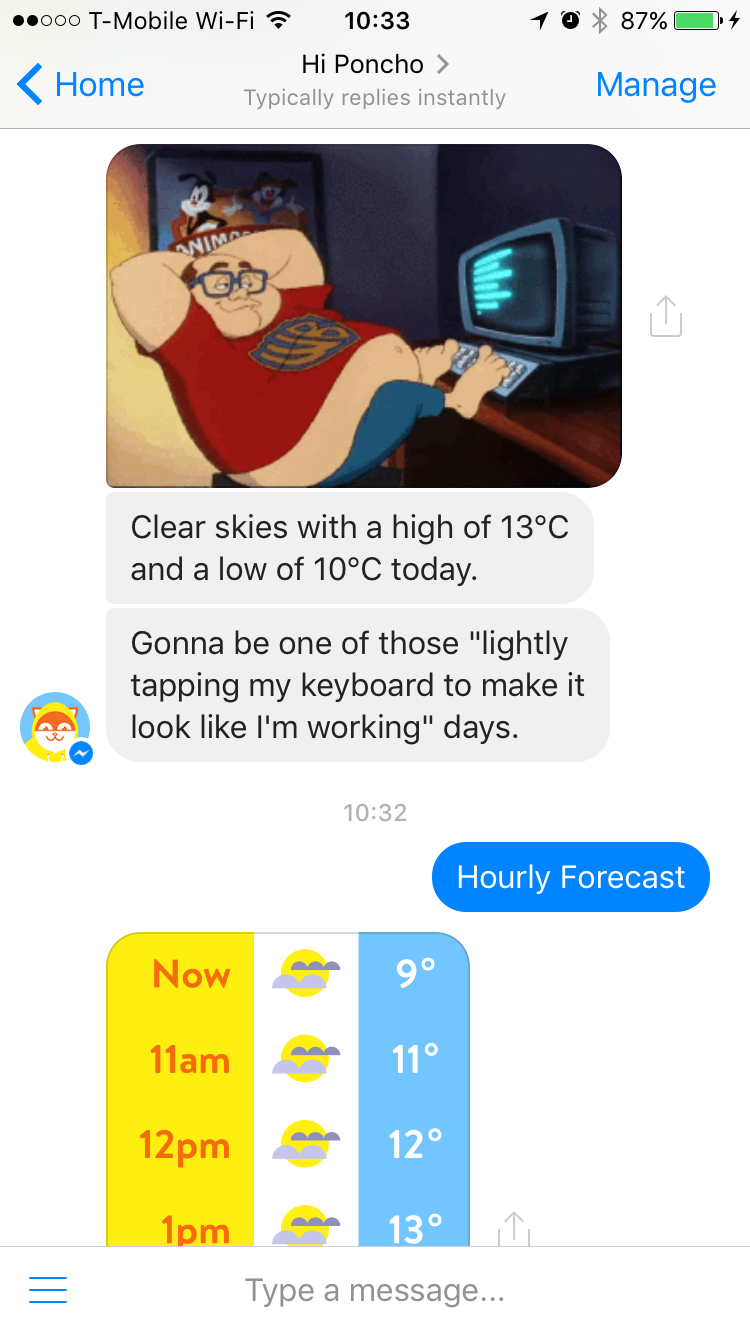How to develop your chatbot strategy
Adelyn Zhou is a founder and CMO of TOPBOTS, a platform specialising in connecting large enterprise companies and small businesses to bot and artificial intelligence (AI) service providers and vendors. TOPBOTS helps their clients implement an AI strategy and also lead interactive workshops to train personnel in this new hot field. Here she explains how publishers should be developing chatbot strategy.
• Subscribe to our weekly FIPP World newsletter to receive stories such as these in your inbox
• Get a copy of FIPP’s Innovation in Magazine Media World Report, with one full chapter dedicated to media innovation with bots
• Join us at the Digital Innovators’ Summit, 18-20 March 2018 in Berlin, where tech will be one of several themes under discussion
What is a chatbot?
A chatbot is a computer program that you can talk to using your voice (like Siri or Alexa) or text (as in Facebook Messenger or on Slack). Chatbots and bots vary in their levels of sophistication. Some are powered by artificial intelligence mechanisms, while others are simple decision trees in the back end. They perform within the behavioural scenarios developed by engineers, and the smart ones learn from users’ answers. A bot is only as smart as the back library (data) from where it pulls its answers. For this reason, the coolest and smartest bots around are the general digital assistants such as Siri, Google Now, and Alexa.

Chatbots are arguably the first media technology that was not some form of replica of a product that previously existed in print or a digital format, but an entirely new tool built on a mobile platform. It compliments overall publishers’ strategies, and performs best on a mobile platform. Chatbots have in fact been around since the 1950s. The first one was Eliza created by the MIT. But the technology did not take off until recently for many reasons.
What do chatbots do?
Zhou splits consumer-facing chatbots into three main categories, with a fourth one being efficiencies-driven:
• Customer service:
o First, there is customer service bots. They are the ones that answer frequently asked questions, service questions, check order status, and connect you to the right specialist within the company.
• Marketing:
o The second category is marketing bots. They are used to help promote a marketing message. For example, Sephora, a French chain of cosmetics stores, has a bot within Kik’s messaging platform that provides makeup tutorials and suggests products for purchase.
• Product-specific:
o The third category is bots that enhance a core functionality of a product. DuoLingo, a language-learning platform, has a language bot that you can use to practice a language you are studying within its app.
Then there is a large group of bots that helps companies be more efficient. A great example is The Washington Post’s news-writing bot Heliograf, which is not a chatbot but content – writing bot. “The Heliograf software identifies the relevant data, matches it with the corresponding phrases in the template, merges them, and then publishes different versions across different platforms. The system can also alert reporters via Slack of any anomalies it finds in the data—for instance, wider margins than predicted—so they can investigate“, – writes Wired.

Are chatbots a new digital media format?
Yes, they are. A chatbot is a new medium that is taking advantage of messaging apps. SMS allowed only 160 characters to be sent at a time, and businesses tried to use this tool to their benefit. Sometimes it worked (like BedBath&Beyond mobile coupons), sometimes it didn’t (a story about a customer suing Papa John’s Pizza over unwanted texts). In contrast, consumers use messengers to talk to friends and family, to share videos and the latest news. Facebook Messenger alone has 900 million active users, and media goes where the audience is.
Who is building bots?
There are over 30,000 bots on Facebook Messenger, and Alexa just passed 10,000 skills. Just like in the mobile apps universe, independent software developers build chatbots, and some corporations are building them in-house. Quartz opened up Bot Studio after it got a US $240,000 grant from the Knight Foundation. Here you can take a look at the list of brands that are already using bots.

Should media companies be building chatbots?
CNN has created a bot for Amazon Echo and Facebook Messenger in April 2016, and in November 2016 they reported 4.5 million active monthly users. Other major media sites with bots include The New York Times, Wall Street Journal, and NBC. Clearly, there are a lot of opportunities for media brands in this new space.
Zhou says that chatbots open up the doors to the new content distribution channels and new audience segments, especially to younger demographic who uses messaging platforms heavily. The space is not crowded yet, and your chatbot app will get a lot of attention from readers and industry professionals.
You decided to build a bot. Now what?
Zhou says that first, you should ask yourself why you want to build a chatbot. What’s the purpose? Is it to distribute your content? Is it to learn more about this tech platform so that when bots become mainstream, you will be at the forefront of this movement? Is it going to be used for customer service? Knowing your goal will enable you to create a solid strategy.
Designate a small team to be in charge of the project. If you have an internal engineering team, then you can do the development in-house. If not, hire a third-party company or buy an off-the-shelf solution.
Next step is to decide which platform your bot will live at. Some bots that live in Slack (like HBR’s Bot For Slack), in a browser on your own website, in one of the messaging apps (Facebook, Kik, Telegram, WeChat, iMessage, and others). Or your bot is going to be a stand-alone mobile app (like Quartz’s News App).
What is the best environment for your media bot?
Go to where your users are. If you are a B2B brand, then Slack would be a good answer. But if you are a consumer magazine publisher, you probably want to explore building bots for Facebook Messenger and other messaging apps.
Are bots expensive to build and to maintain?
It depends on how big your scope is. If the goal of your chatbot is simple and straightforward, it doesn’t have to be expensive. A cheaper solution would be to use off-the-shelf platforms. Zhou recommends looking at:
• Chatfuel
• PullString, and
• Assist
Building your bot in-house could potentially save money, too.
However, if you are a larger publisher with lots of sub-brands, corporate layers and regulations that you have to go through (say, you are Bloomberg creating a bot for the financial data), then development process could be more expensive.
Still, Zhou estimates that an average cost of building a bot is lower than an average cost of building an app. Launching one chatbot could fall anywhere between a couple of thousand dollars to a few hundred thousands of dollars.
The initial investment could be sufficient, but the maintenance will vary depending on how much you update the bot. For smaller companies, one person is enough to run the service. If you are a larger publisher that plans to change bot’s behaviour often, then it will be more work.
What’s the business model for bots?
Zhou says that the bots market is still too young to talk about revenue opportunities confidently. For an ecommerce company, the path is more clear because it can sell products through the chatbot and charge commission.
If you are a magazine media publisher, then you could apply whatever your corporate monetisation strategy is. Grow your audience, expand your content distribution channels, charge for subscription, and sell ads within your bot.
Even though most chatbots are free, Recode writes that charging for a smart bot is a possibility. “If bots are designed to save you time that you’d normally spend on mundane tasks or interactions, it’s possible they’ll seem valuable enough to justify a subscription fee.”
Where do you ‘house’ your chatbot?
Zhou says that you need to go back to a business model question and why you got into the chatbots field, to begin with. If we build a chatbot for Facebook Messenger or Slack, the user visits stay inside those platforms. Another option is to launch a stand-alone chatbot app like Quartz did or a Brazilian news site Tribuna do Parana did.
A chatbot marketing distribution strategy is another challenge for publishers to consider. You will need to advertise this new product by leveraging already existing distribution channels, internally and externally depending on your requirements.

What are the opportunities?
You can develop both a consumer-facing bot and a bot for internal use, like The Washington Posts’ Heliograph discussed above. On the latter, consider how many stories per day such bot can produce? It will come at zero cost once your bot is rolled out and fine-tuned. By outsourcing templates to bots, newsrooms can for example free up time to do more investigative journalism.
But most chatbots today focus on marketing and customer service. Fashion and beauty bots are popular, just look at Kik messenger’s fashion and beauty category. Which begs the question: So why aren’t more lifestyle magazine media brands there yet?
For more:
FIPP Innovation in Media World Report 2017/18 (launching 20 March)
The complete beginner guide to chatbots
How The Quartz Bot Studio is preparing for the next era of media
For Quartz, bots are a chance to build a new path for interacting with news (and news outlets)
Chatbots as a distribution strategy for media companies
Why Facebook Messenger bots haven’t caught on with publishers
The Washington Post: We made a Facebook Messenger bot to track people’s feelings about the election. Here’s what we learned
Slack: A beginner’s guide to your first bot
More like this
Fifty innovative ways brands use chatbots
How The Washington Post drives innovation
Quartz’s continued disruption through relentless focus on the user
Chat apps, bots and the integration of publisher content









